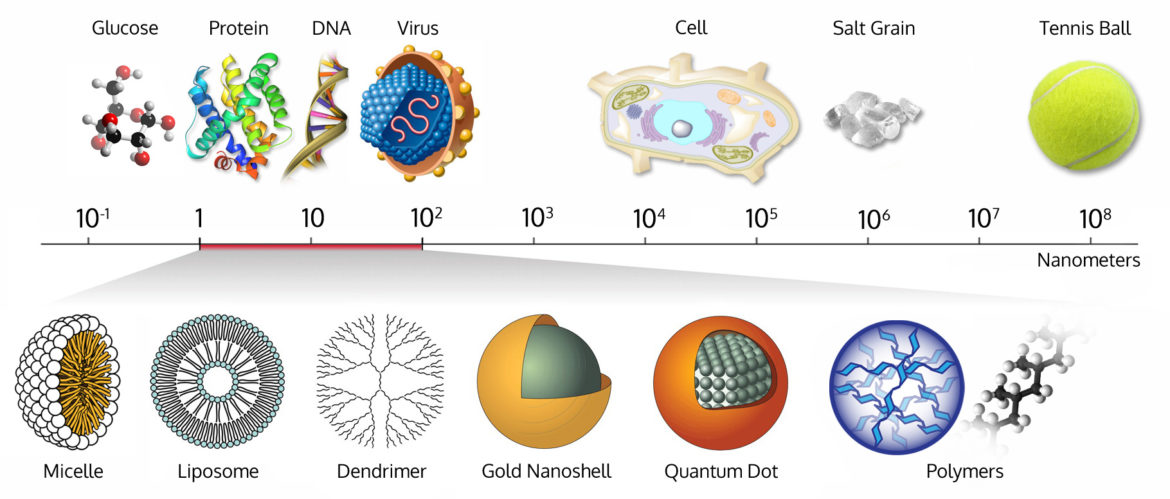What are nanoparticles and what are they used for?
Posted October 21, 2019
Nanoparticles are very small objects less than 100nm across any dimension. This is small enough that up to 80,000 would be required to equal the width of a single human hair. For more examples of size comparisons, see Figure 1 below. At this small scale, these tiny objects often have unique properties and behaviors. Nanoparticles can be used in fluid suspension, coatings, and many other forms, as their high surface area to volume ratio means that they can easily diffuse, melt, and otherwise be manipulated.
Possibly the most well-known products of nanotechnology are carbon nanotubes, regularly used to strengthen and lighten steel. Both carbon nanotubes and 'buckyballs' or round versions of these curled graphene sheets, are nanoscale structures made up of simple carbon nanoparticles and manipulated into various configurations. Another common example is nanoscale zinc oxide nanoparticulate included in sunscreen to help block UV solar radiation.
Some nanoparticles have a moderate antibacterial effect, while others can improve toughness of materials when mixed in. In the life sciences fields, it has been found that nanoparticulate matter can penetrate cells far more easily than other delivery methods, and there is research being done for nanoparticle applications in vaccines, drug delivery, and anti-tumor treatments. More practical and theoretical uses for nanoparticles are being continually explored.

Dissolved Organic Matter and Lead Nanoparticles Application Note